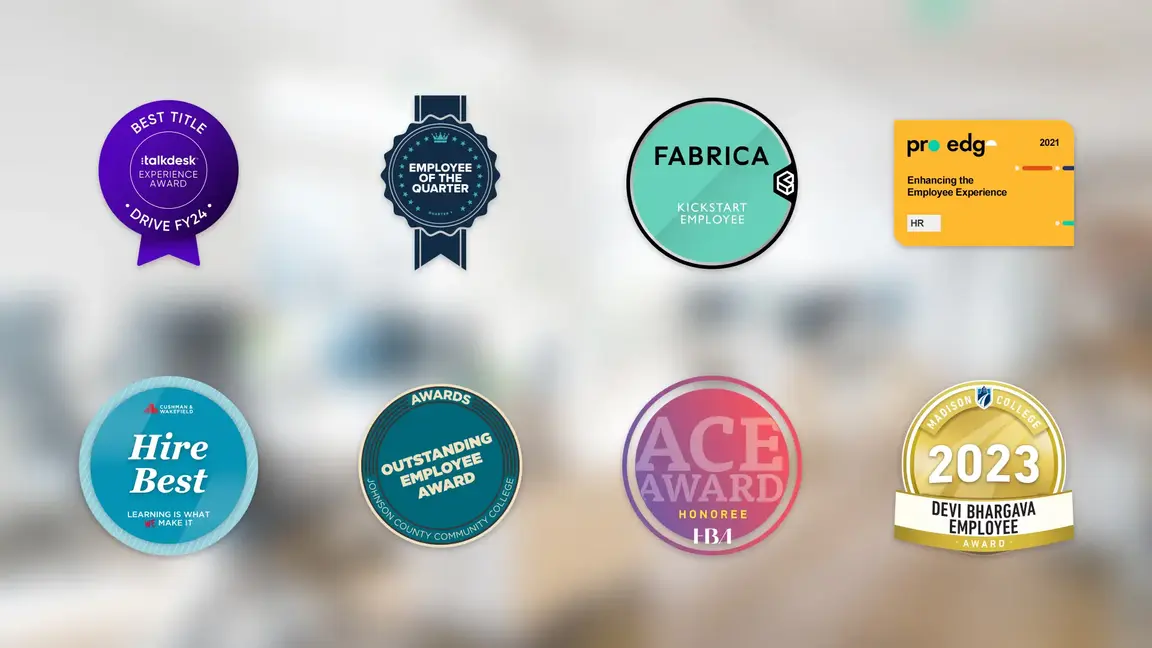Introduction
In today's ever-evolving professional landscape, where the significance of acknowledging employee contributions is at an all-time high, mastering the art of how to issue digital badges for employees is a must. Digital badges have emerged as a dynamic tool for employee recognition and engagement. This blog aims to take you on an in-depth exploration of digital badges, their crucial role in the professional workspace, and a step-by-step guide on how to issue digital badges for employees effectively using the innovative platform, Certopus.
A glimpse into digital badges
Before we go on the journey of issuing digital badges, let's understand what these badges are all about. Digital badges are virtual representations of skills, accomplishments, or certifications earned by individuals. Unlike their physical counterparts, these badges are easily shareable, making them a versatile tool for recognizing and promoting professional growth.

Imagine digital badges as the cool stickers of the professional world. They're the virtual high-fives you get for nailing tasks at work. Unlike the stickers you used to slap on notebooks, these digital badges are like a modern, shareable scrapbook of your work victories.
In contrast to traditional certificates, these virtual badges serve a practical purpose beyond decoration. They act as clear and accessible representations of an individual's accomplishments, offering an efficient way to showcase a range of professional achievements.
The significance of digital badges in the professional workspace
Digital badges are essential in the modern workplace, offering a quick and verifiable snapshot of an employee's skills and achievements. In a competitive job market, they provide immediate recognition and are valuable assets for both job seekers and employers. Beyond individual acknowledgment, badges contribute to a culture of valuing practical skills and continuous learning. They also foster transparency and trust within organizations by serving as objective measures for recognition, enhancing overall morale and motivation.
1) Importance of badging in L&D department: Digital badges are crucial in L&D as they streamline recognition of individual training accomplishments, providing verifiable evidence of acquired skills. The L&D department's responsibility for training initiatives is efficiently supported by badges, aiding in the quick identification of skilled individuals within the company. This streamlined approach enhances talent management and overall L&D success, while transparently acknowledging employees' skills and achievements, contributing to a positive employer brand image.

2) Importance of badging in HR department: In the HR department, digital badges are instrumental for employee retention and attraction. They provide tangible recognition of skills, fostering a positive work environment. Badges enhance the company's appeal to prospective talent, showcasing a commitment to recognizing and valuing employee contributions. This streamlined approach aids in retaining skilled personnel and attracts new talent by highlighting a culture that values continuous growth and achievement.

Why digital badges matter
Digital badges are essential for 3 major reasons and they are-
- Retaining talent
- Building employer brand image
- Workforce management
Now lets talk about these in detail:
- Retaining talent: Digital badges play a crucial role in retaining talent by offering employees verifiable evidence of their skills and achievements. These badges create a transparent system of recognition, providing them with a sense of validation for their efforts. This fosters a positive work environment, contributing to increased job satisfaction and a stronger sense of loyalty among employees. Due to this, they are more likely to stay engaged and committed to the organization.
- Building employer brand image: Digital badges, adorned with the company logo, are pivotal in shaping a positive employer brand image. These badges not only highlight individual achievements but also visually align them with the organization. This states a commitment to skill development and employee recognition, creating a recognizable representation of the company as a reputable and supportive employer. When employees share their achievements with badges, it makes the company's image even stronger, connecting individual successes with the company's identity.
- Workforce management: These badges offer a quick snapshot of an individual's capabilities, aiding in efficient talent allocation within the organization. Workforce managers can easily identify employees with specific skills, ensuring that the right people are assigned to the right tasks. Additionally, digital badges contribute to workforce planning by providing data-driven insights into the skill sets present within the team, facilitating better decision-making regarding training needs and recruitment strategies.
Steps for issuing digital badges for employees

Certopus makes the exhaustive task of issuing Digital Badges really simple and here’s how-
Step 1: Pick Your Badge Moments:
Think of things you want to say "great job!" for – could be mastering a new skill, acing a project, or going above and beyond. These are badge moments!
Step 2: Design Your Badge
Certopus makes it so easy and fun. Choose colors, pictures, and words to create badges that fit your company and the achievement. Pre-built templates, branding tools, dynamic elements like names and progress bars, even interactive features like links and videos, you have a range of options to design you badge.
Step 3: Effortless Awarding
Certopus simplifies badge awarding. Choose recipients, pick platforms like Slack or LinkedIn, and watch celebrations unfold! Track engagement and badge popularity with built-in analytics to continuously refine your program for ultimate success.
Step 4: Track & Analyze
Certopus shows you how your badge program is doing. See which badges are popular, how engaged your team is, and where to refine your program.
Conclusion
In conclusion, knowing how to issue digital badges is a big deal in today's workplaces. These badges help highlight skills, make work more positive, and encourage learning. From adapting to new skills to recognizing achievements, digital badges play a key role in changing how we celebrate success in both education and the workplace.
Frequently Asked Questions (FAQs)
How are digital badges showing up in the workplace?
Digital badges are appearing in workplaces as visual indicators of skills, displayed on profiles and resumes for quick recognition. Organizations use badges in internal recognition programs and appraisals, which in turn fosters a transparent and engaging work culture.
How are digital badges verified?
Digital badges are verified through embedded metadata, including issuer details and criteria. Ensure that the platform you use to issue digital badges comply with any popular badging standard like Open Badges 3.0 .
Who issues digital badges?
Digital badges are issued by educational institutions, employers, and online platforms, signifying achievements or skills. Professional associations and online learning platforms also provide digital badges as credentials for demonstrating expertise.
Need More Information?
Schedule a demo to learn more about Certopus for your business use case, or if you have any questions, don't hesitate to contact us. We would be delighted to assist you. Finally, if you're on social media, follow us to remain informed about our latest developments and learn more about digital credentials like certificates, badges, and micro-credentials.
Recommended Articles



